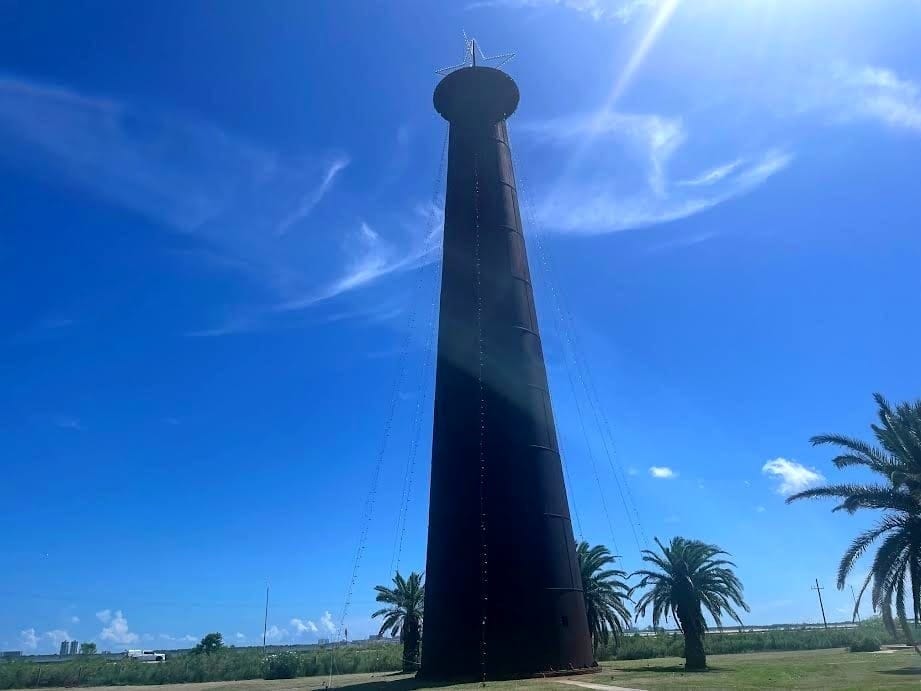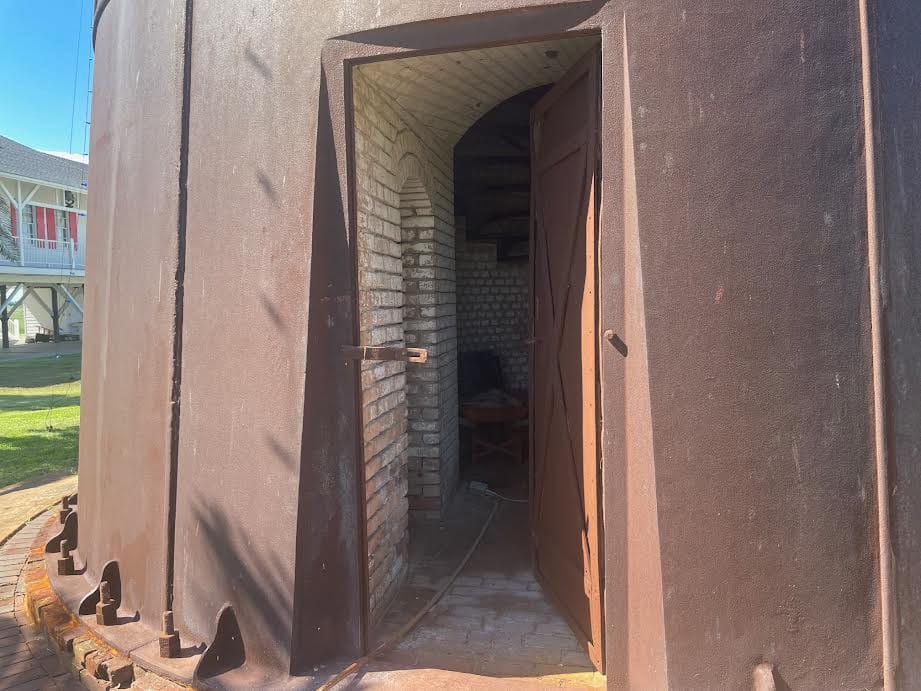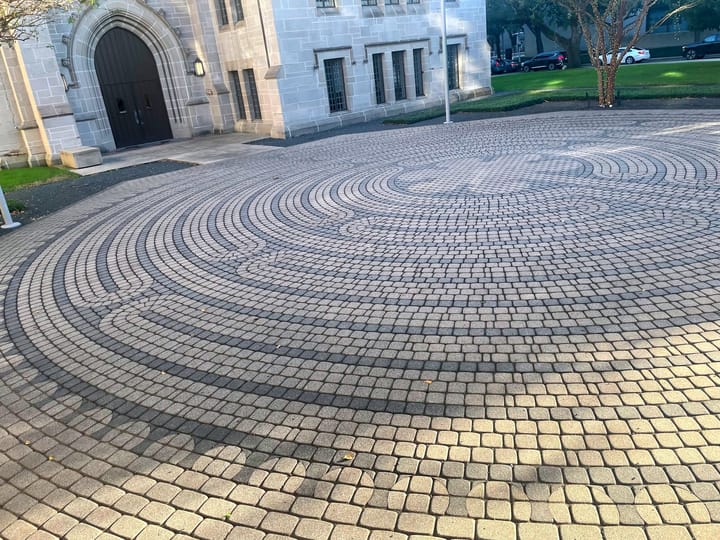Saving The Last Lighthouse In Galveston

The ferry ride to Bolivar Peninsula in Galveston County is the first time in months I’ve stepped out in the daylight and not immediately made a rude gesture at the oppressive sun. The air over Galveston Bay is a good ten degrees cooler than the asphalt oven of Houston, and it’s hard to feel anything but joy while watching adorably tiny dolphins dance in the boat’s wake.
The Bolivar Point Lighthouse watches over the whole scene in the distance as it has done since 1872. The cast iron tower stands 117 feet, making it the tallest lighthouse of the five left in Texas and well above average for American lighthouses overall. It is the last lighthouse left in the Galveston area.
In the daylight, the black iron looks slightly menacing and a bit like some illustrations of Saruman’s Orthanc in The Lord of the Rings. At night, though, it’s emblazoned with Christmas lights and topped with a vibrant Texas star where the crown once stood. More on that later.

Amy Chase and Jody DeSantis greet me at the surprisingly opulent lighthouse keepers’ cabin. As the executive director and treasurer of the Bolivar Point Lighthouse Foundation (BPLF) respectively, they are the driving force behind preserving the historic building. Chase’s family purchased the lighthouse after World War II when the federal government was selling off excess land and long after it was decommissioned in 1933. She uses the keeper’s house as a second home, occasionally sheltering people displaced by hurricanes there as did the keepers of old.
“Someone told me, ‘we wouldn't be here if our great-grandmother hadn’t survived the storm in 1900,’” says Chase. “There are so many incredible stories, and there's so much Texas history around this. When you think about weather conditions, whether it was a hurricane or whether it was a freeze and the Bay froze over, this lighthouse endured all of that.”
The original keepers’ cabin was destroyed in Isaac’s Storm in 1900 while 125 people sought refuge in the tower. The current house was rebuilt, this time on stilts, and made it safely through another devastating hurricane in 1915 with a group of refugees. Even as hurricanes continue to grow in number and intensity, the lighthouse has stood.

But it won’t stand forever without significant help. While the structure itself is still sound, the crown where the light once blazed steadily became a hazard following numerous storms. In May 2023, the BPLF launched a delicate maneuver to rescue the crown before mother nature could cast it down.
Using local labor and a custom harness, they carefully removed the top. At one point, a passing ship happened to use the same radio frequency as the crew, and by terrifying coincidence the two men communicating on the boat had the same names as the foreman and crane operator. Despite conflicting, nearly nonsensical directions on the crossed frequencies, the top came off with only a few pieces of black, rusted metal tumbling to the ground. The crown is now safely stowed, waiting for a chance to be displayed on the grounds away from danger.
That will hopefully come sooner rather than later. The BPLF is hard at work raising funds to make the site open to the public. Some of the much-needed improvements are restoring the paint to its classic black and white striping as well as building a new crown. DeSantis estimates that the total cost of the project will be around $3 million and could be completed as early as next summer.
“We have a great plan in place, and we’ve identified so many of the contractors that we were going to be working with,” she says. “Does it have to be completely done before we open it? I think we’ll get to a certain stage where it’s safe enough . . . You might not be able to get to the top just yet, but that's the goal.”
Chase certainly has nothing but faith in the structural integrity of the lighthouse when she offers to give me a tour of the interior. She needs my help to wrench open the century-old padlock and move the door, but once we’re inside the place looks oddly pristine. The stairs to the first landing feel as solid as if they were installed yesterday. Chase points out a welded patch a few dozen feet up one side, a repair that is older than either of us. It’s weird to see something like that become historic itself.

Unsurprisingly, the cast iron structure is an oven in August, especially as you go further up. I ask to call it quits on the first landing, and Chase tells me about the lighthouse’s current occupant, Opal. The barn owl has made herself at home for two years now. During a visit from State Senator Mayes Middleton (R-Galveston) to this same landing, Opal silently flew by Chase’s head and startled her so badly she jumped on the senator. The owl doesn’t deign to welcome me, though, and we head back down.
Back outside, the Bay is filled with passing ships, including my ferry ride home. Chase and I watch the water for a bit and reflect on what the sea meant in the nineteenth century. At that time, Galveston was on its way to being the busiest port in the United States, welcoming cargo and immigrants alike. The torch of the lighthouse was a signal of home, and it’s why she works so hard to restore it to glory.
“Galveston was the Ellis Island of the South,” she says. “All the immigrants that came through, these people wouldn't have made it had this light not been here shining like a beacon to guide them in.”



Comments ()